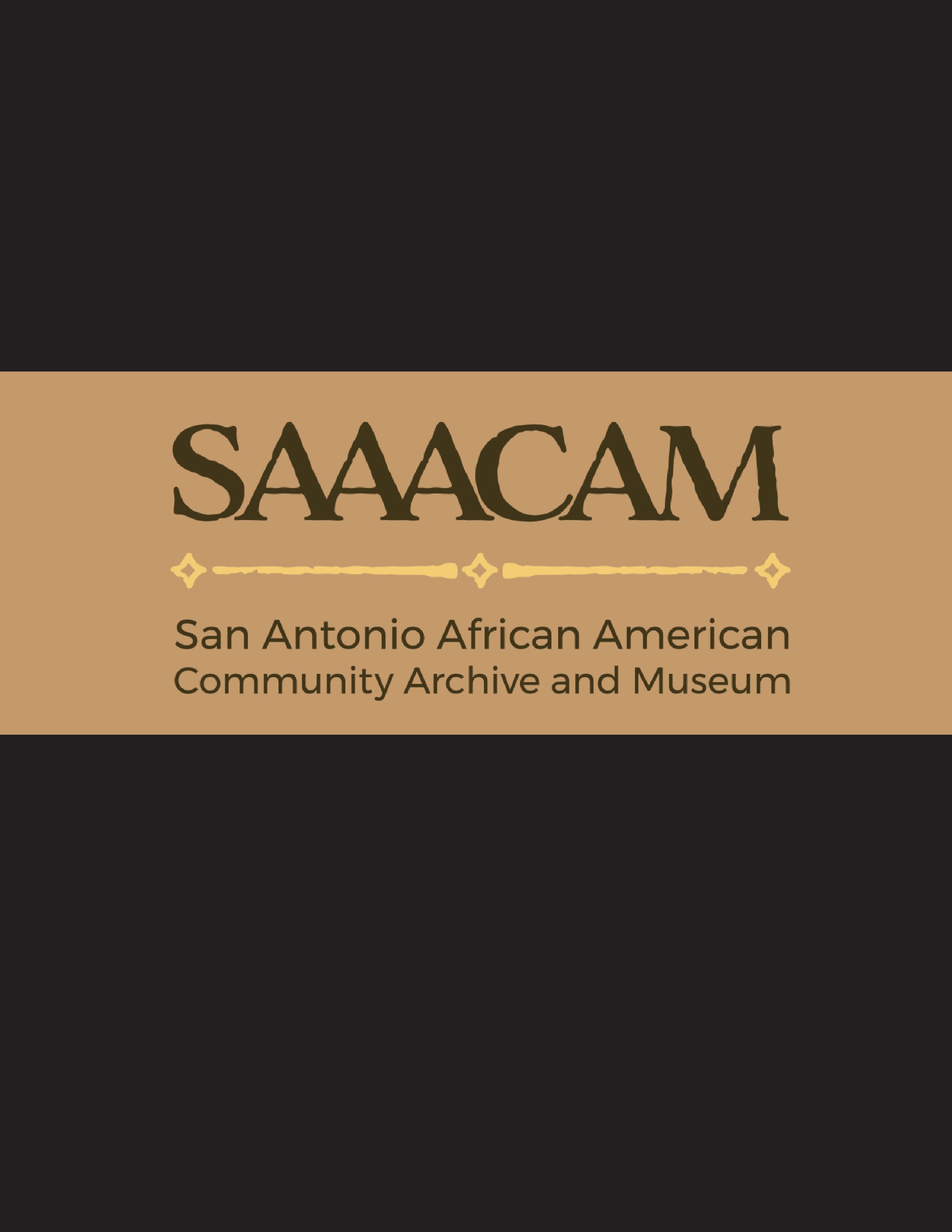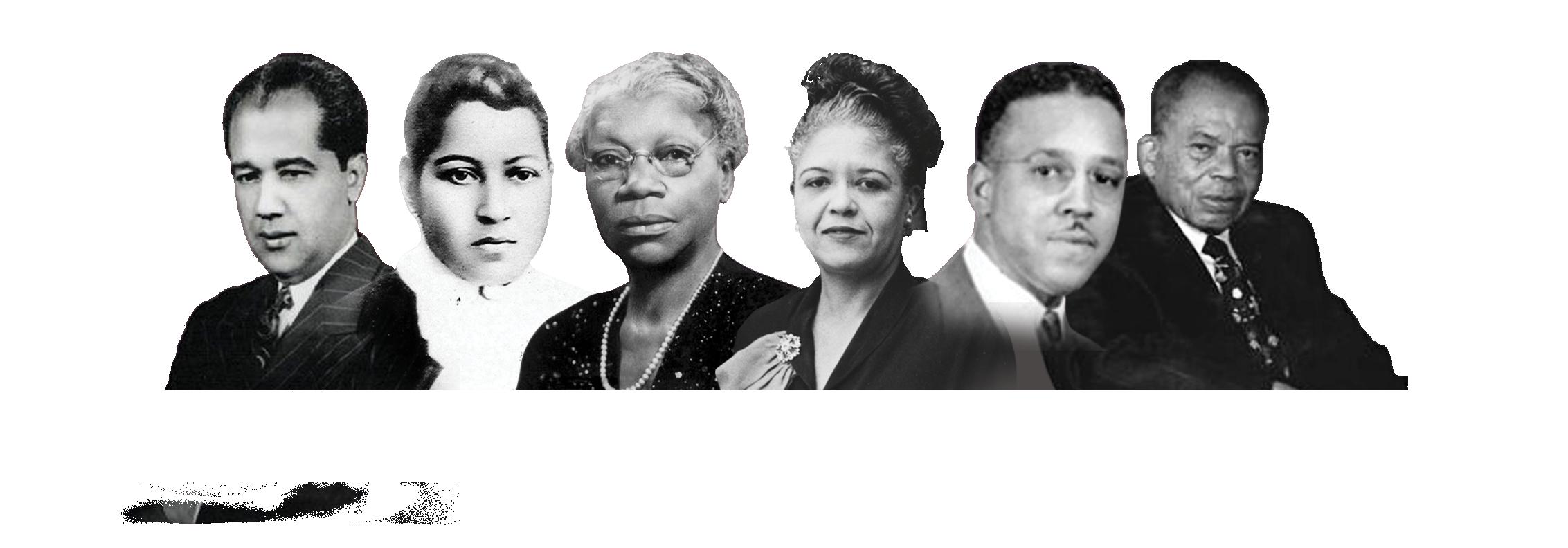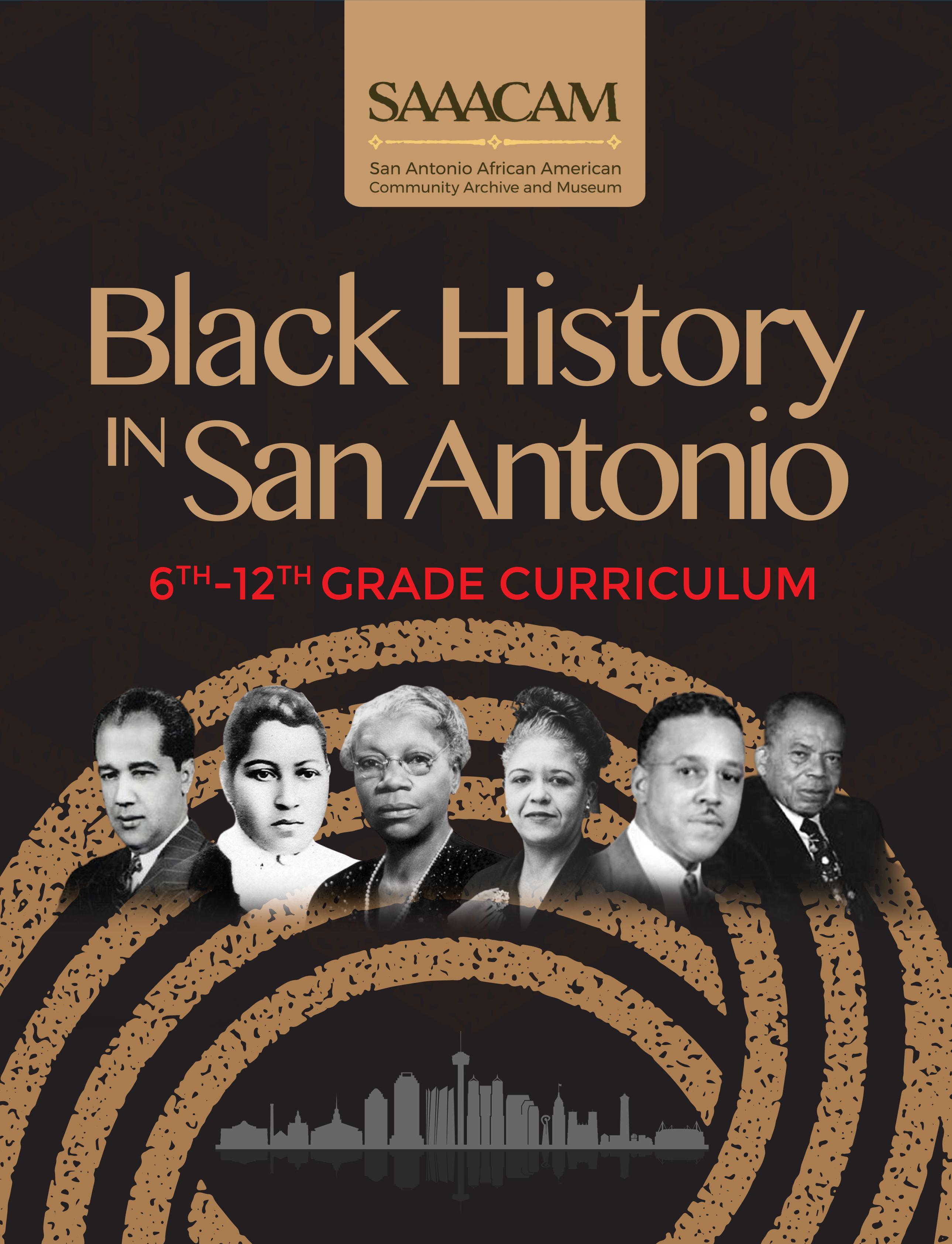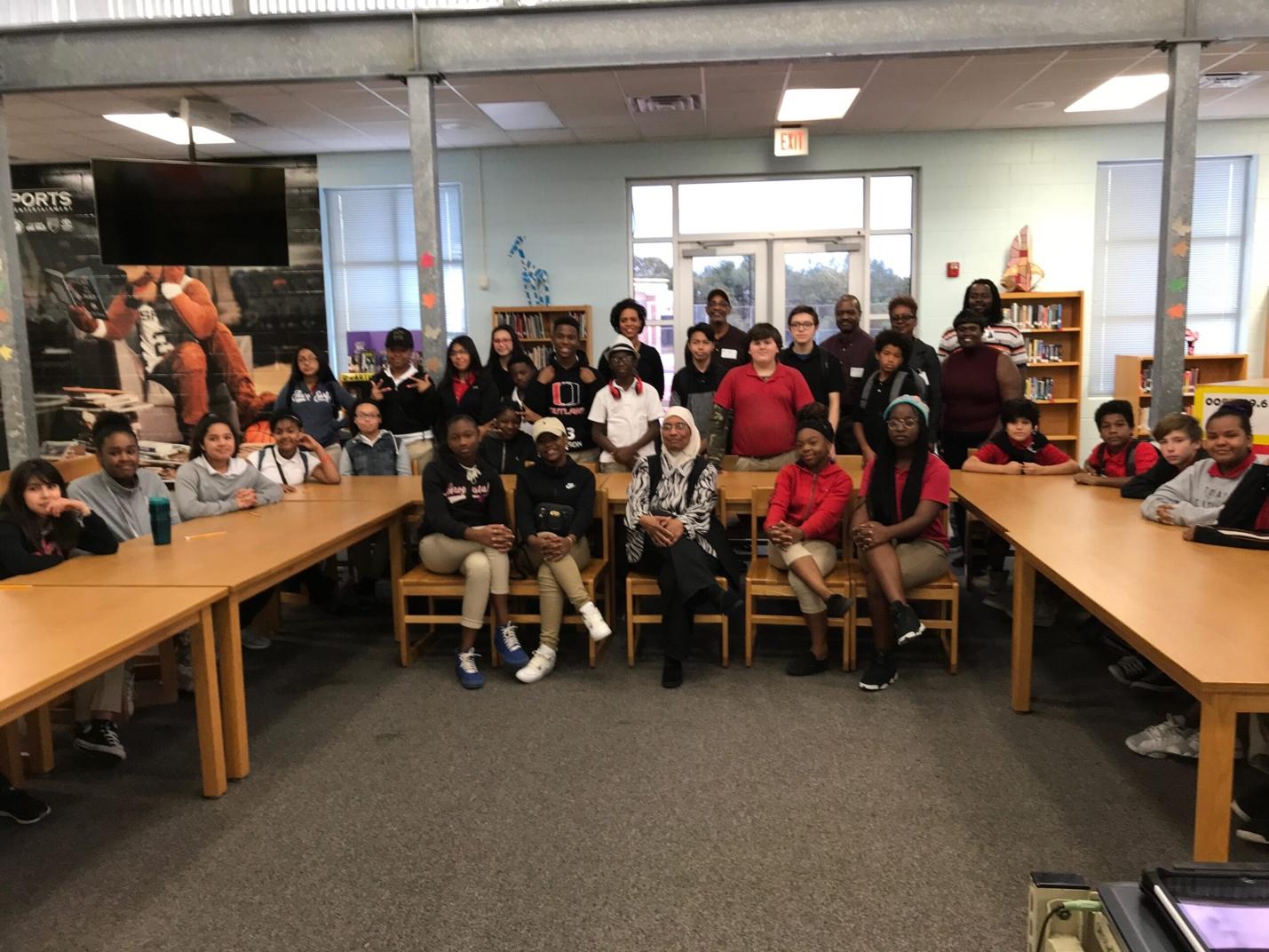Black History in San Antonio
Grade 6-12 Curriculum
The Arrival of Africans in San Antonio
The first step in studying Black history is realizing that Black history is world history seen through the eyes of the people of the African diaspora. Black history begins with world history! “Lucy,” a Black female fossil, is recognized by most scholars as the oldest human fossil ever found. Her remains were found in Hadar, Ethiopia in 1974 and are dated at 3.2 million years old! Ethiopia is a country with a rich history on the continent of Africa. Scientific discoveries such as this one clearly prove that human life evolves from this region, thereby making the proven claim that Black people are the oldest and first race of humans. This is truly where Black history begins. Africa evolved into a powerful continent with a beautiful history. Africans are known as the first humans to engage in: farming, fishing, mining, mathematics, mortuary science, art, and many other everyday human practices. Africans developed the incredible pyramids of Egypt, which are still known today as among the most dynamic structures ever built. African kings and queens amassed enormous riches and led powerful nations over many years. African history is simply amazing!
Black history then takes an unfortunate turn with the emergence of slavery in America. November of 1526 in South Carolina is one of the first-known accounts of enslaved Africans arriving in the United States. Some European settlers viewed slavery as a cheap source of labor that they could use in America and other countries. This distorted view led to the tragic kidnapping of Africans from the African continent. It is estimated that over 11 million Africans were kidnapped from Africa and forced to work on plantations in America
Estevanico is known as the first African to step onto Texas soil in 1529. He was from Azemmour, Morocco. Andres Dorantes de Carranza was Estevanico’s owner. They sailed together across the Atlantic Ocean. Their ship eventually landed in Galveston, Texas in 1529. Estevanico traveled with Carranza and his team as an interpreter and scout throughout Mexico and Texas. Unfortunately, Estevanico was killed by one of the Native American tribes during a scouting mission gone bad. By 1792, there were over 400 Africans who arrived with the Spanish who settled in Southwest Texas. Some of them were enslaved and some of them were actually free men and women.
9
The Battle of the Alamo was a historic battle in San Antonio that occurred from February 23March 6, 1836 Mexican General Antonio Lopez De Santa Anna led a large contingent of Mexican troops against only 200 defenders of the Alamo. There were actually many enslaved and free Blacks who were present among those 200 defenders of the Alamo. After 13 days, Mexico won the battle. The Mexican force then took over control of the Alamo. Mexico’s victory was short-lived though. The intense battle at the Alamo sparked even more resistance against Mexico This resulted in a strong cry for Texas independence later that year.
“Joe” was a noted Black Alamo defender who was enslaved by General William B. Travis. After leaving the Alamo, he was able to give an important eyewitness account of the battle. He was last seen in San Antonio in 1877.
Captain Charles T. Smith was a veteran of the Confederate Army who is known for telling the San Antonio Express-News newspaper the following in regard to the Alamo, “there were outside steps which led to the center of the building to the second floor. The steps ended in a platform. That platform was one of the old slave markets where Negroes were put up for auction.” He was referring to the little-known fact that the Alamo was actually used to buy and sell enslaved Africans.
Sam McCullough was a notable Black man in Texas during this time who joined the Matagorda Volunteer Company to fight in the Texas Revolution. He was severely wounded in the Battle of Goliad and this left him disabled for life. He was initially denied citizenship because of his ethnicity, but on December 18, 1837, he was declared eligible to own land as a disabled veteran. This was significant because at this time during the Texas Revolution, 5,000 Blacks or approximately 13% of the Texas population was still enslaved.
Hendrick Arnold was a heroic Black scout and spy in the Texas Revolution. He briefed General William B. Travis at the Alamo and also brought important information to General Sam Houston. This information helped the defenders win the historic Battle of San Jacinto. After the Texas Revolution, Arnold was granted land in what is now Bandera, Texas.
The Republic of Texas kept the majority of its Blacks still enslaved. A law was even passed that banished all free Blacks from the Republic of Texas. The number of enslaved Africans steadily increased in Texas. Most of them were forced to work as field hands, producing crops such as: corn, cotton, and sugar. A significant number of them escaped slavery by running away.
January 1, 1863 was the date that the Emancipation Proclamation was issued This proclamation declared "that all persons held as slaves within the rebellious states are, and henceforward shall be, free.” Contrary to popular belief, the Emancipation Proclamation did not end slavery in America. It did dramatically change the direction of the Civil War. The proclamation announced the acceptance of Black men into the Union Army and Navy, enabling the “liberated” to become “liberators.” By the end of the war, almost 200,000 Black soldiers and sailors had fought for the Union.
10
The 13th Amendment to the United States Constitution formally abolished slavery, except as a punishment for crime whereof the party shall have been duly convicted. This amendment only freed the enslaved in the Confederate states.
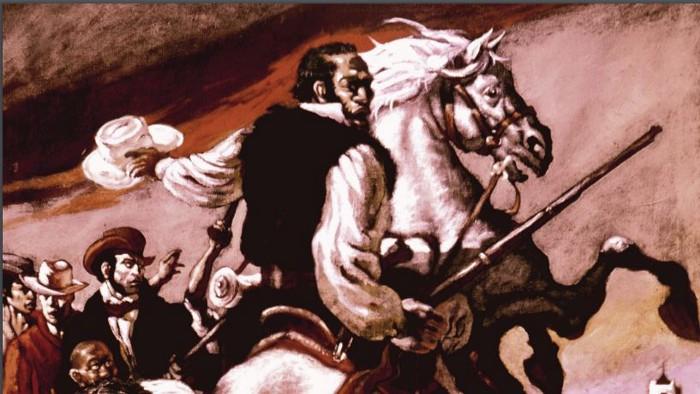
Juneteenth is a national holiday that commemorates June 19, 1865. Two and a half years after the issuance of the Emancipation Proclamation and two months after the end of the Civil War (April 9, 1865), General Gordon Granger arrived in Galveston, Texas to announce that the Civil War had ended and that all who were enslaved in Texas were now free.
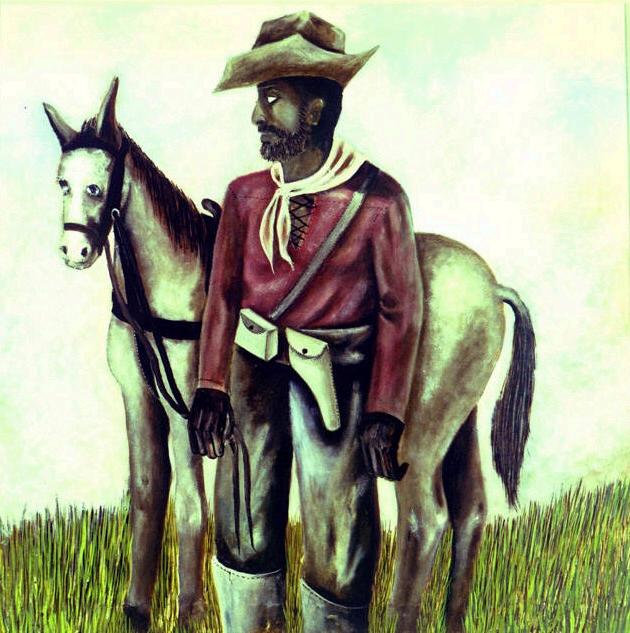
11
Section 1 Photo Gallery:
Sam McCullough
Hendrick Arnold
Short Answer Questions:
1. Explain how science and technology will possibly be advanced enough one day to give us an exact origin date and location of the first humans on Earth?
2. How does learning about slavery help to ensure that it will never be allowed to happen again?
3. Why were those who were enslaved allowed to risk their lives fighting at the Alamo, but not allowed to be free?
4. Does the fact that enslaved Africans were bought and sold at the Alamo harm its legacy?
5. How did an important announcement such as the end of slavery take 2 years to reach Texas?
Essay Questions:
1. What are some ways that African-Americans can reconnect with their African culture?
2. Can today’s prison system be compared in some ways to slavery? If so, how? If not, why?
3. Based on what you know about Black citizens of the Texas Republic at the times referred to in this text and how they were treated, how do you view your own citizenship and how you are treated today?
4. What can be done to remember and honor the Blacks who fought at the Alamo?
5. What can be done to rectify the fact that enslaved Africans were bought and sold at the Alamo to avoid African-Americans from viewing the Alamo in a negative light?
6. Discuss some innovative and fun ways that families and schools can celebrate Juneteenth
12
Enrichment Activities:
1. Visit the Alamo as a class or grade level. Have students participate in a guided tour of the entire facility and have them take notes as they view it. End the tour with a class discussion about the story of the Alamo, its relevance today, and remembering the Blacks who were there.
2. Celebrate Juneteenth in the classroom with African-American inspired snacks, AfricanAmerican music, African-American art, and a group discussion of the meaning of Juneteenth.
Vocabulary Words:
diaspora emancipation
origin proclamation
banish auction
notable
ethnicity
mortuary science
abolish
rectify
enslaved plantation
13
Early Figures and Places of Black History in San Antonio
Ellis Alley is a downtown area in San Antonio that represents the city’s first African-American settlement after emancipation. The area was divided into 25 lots and sold exclusively to AfricanAmericans. The building of the I-37 freeway, the construction of Hemisfair and urban renewal led to the eventual exit of the businesses there. However, in the 1990’s, the area was revived and refurbished to house various small businesses.
Major General Joseph J. Reynolds was a white military officer who established a local Freedmen’s Bureau and also the Lincoln School, a school for Black children in San Antonio in partnership with St. James AME Church. The purpose of the Freedmen’s Bureau was to ensure a smooth transition to freedom for the formerly enslaved. In its almost five years of existence, the Bureau was able to build the foundation for Negro education in Texas. Over 20,000 Blacks received some form of education through this program nationally. Unfortunately, in 1869, Congress passed a law to shut down the Freedmen’s Bureau.
Solomon Coles was born into slavery in Petersburg, Virginia in 1844. He was a pastor and educator. Virginia slave codes made it illegal for enslaved Africans to receive an education. In spite of those discriminatory codes, he became the first African-American student to graduate from the prestigious Yale University Divinity School in 1875. After moving to Corpus Christi, Texas, he served as a pastor and opened a private school there because he discovered that the public school system was inadequately serving the 300 African-American residents of Corpus Christi. He eventually stopped preaching and devoted his attention solely to education. In 1881, he moved to San Antonio and taught for 20 years, teaching at the historic Riverside and Douglass Elementary schools.
Bishop Abram Grant was born into slavery in 1848. He was eventually able to escape and joined a “Colored” (Black) unit to fight in the Civil War. After the war, he became an accomplished Minister and also a member of the Masonic fraternity Upon moving to Texas from Florida, he became a co-founder of Historically Black College or University (HBCU) Paul Quinn College and pastor of St. James AME Church in San Antonio. He also became a member of San Antonio Lodge No. 1, the first Black Masonic lodge in Texas. He moved quickly up the ranks in the Black Masonic organization statewide and was eventually elected as the Grand Master of Texas, the organization’s highest position in the state. He was also a member of the historic Odd Fellows fraternal organization.
14
2:
Section
Dr. Greene J. Starnes was the first African-American surgeon in San Antonio in 1884. A graduate of HBCU Meharry Medical School, he started his own medical practice in an office on the south end of San Antonio’s historic Alamo Plaza. He also served as the first president of the Lone Star Medical Club.
Samuel J. Sutton, Sr. was born free in Virginia in 1863. He eventually moved to Mexico where he operated a gold mine. He later moved to San Antonio to become an educator. He met his wife, Lillian V. Smith, while attending Guadalupe College in Seguin, Texas. He and his wife lived on the Eastside of San Antonio and eventually had 12 children. Amazingly, ten of their children graduated from college. The couple became successful entrepreneurs, owning a skating rink, funeral home, mattress company, and a farm. They often hosted Black celebrities at their home, including national activist Booker T. Washington, famed scientist George Washington Carver, legendary educator Mary McLeod Bethune, and the first African-American Supreme Court Justice Thurgood Marshall. George Washington Carver was the godfather of their son Alexander Carver Sutton.
St. Paul United Methodist Church, organized in 1866, was the first African-American church in San Antonio. The church’s highly-influential congregation later played an important role in the Civil Rights Movement. Dr. Greene J. Starnes, who is featured in this text previously, was a notable member of the church and also served as superintendent of the church’s Sunday School The church established St. Paul House, which was a facility for Black travelers who could not find housing due to segregation. The church also bears a Texas historical marker that was designated in 2010.
San Antonio Lodge No. 1 was the first Black Masonic lodge established in Texas. Prince Hall Freemasonry is the African-American order of freemasonry. Freemasonry is an international fraternity that traces back to early world history. Freemasonry focuses on learning, brotherhood, and serving the community. Blacks were initially prevented from becoming members of the organization in America due to segregation, therefore, Prince Hall, a leader in the Black community in Boston, started and led the first African-American masonic lodge in 1775. Prince Hall Freemasonry reached Texas in 1871 and San Antonio was the site of the first Prince Hall lodge in Texas.
Alamo Lodge No. 2142 was the first lodge in San Antonio of the Grand United Order of Odd Fellows. It was chartered on September 13, 1880. The Grand United Order of Odd Fellows was at one time the second largest Black fraternal organization in the United States. The organization promotes friendship, love, and truth.
15
Bishop James Steptoe Johnson was a Confederate soldier in the Civil War and Episcopal bishop. He was born in Church Hill, Mississippi. In 1895, he was admitted to the Episcopal missionary district of Western Texas at their request. He was instrumental in the founding of St. Philip’s Episcopal Church in San Antonio. He also played a key role in bringing Artemisia Bowden to San Antonio, resulting in the founding of St. Philip’s College.
Ella Austin was a member of the Progressive Women’s Club. She cared for children and senior citizens in her Westside San Antonio home. By 1897, she had so many under her care that the Progressive Women’s Club started a campaign to open an orphanage. A home was eventually opened at 1930 Burnet Street and named for Ella Austin after her death. In 1968, the facility became a multi-purpose community center. It is still in existence today and focuses on children and senior services.
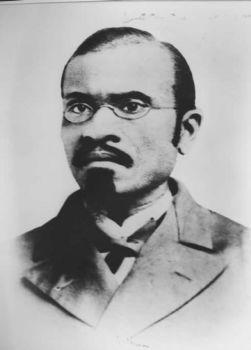
16
Section 2 Photo Gallery: Solomon Coles
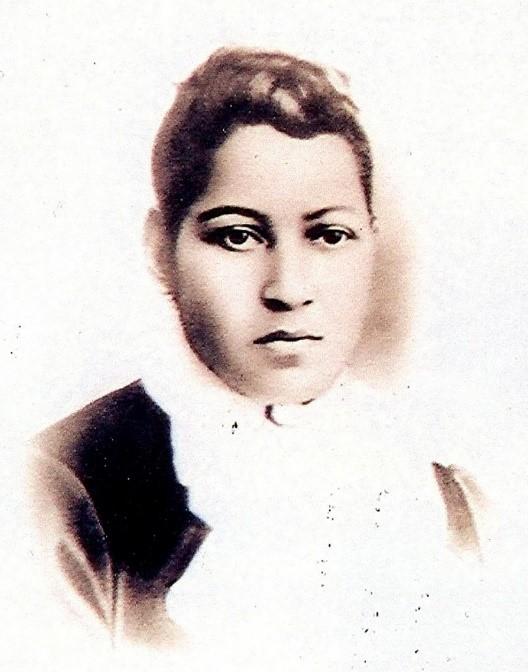
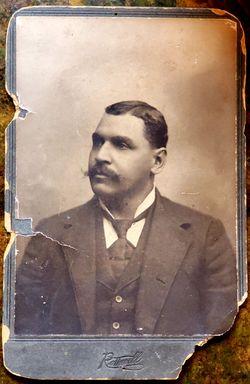
17
Ella Austin
Dr. Greene J. Starnes
Short Answer Questions:
1. Why were enslaved Africans denied the right to an education?
2. How was San Antonio’s Sutton family able to be so successful during the tough, segregated, post-slavery era?
3. How has the Ella Austin Center been able to survive the test of time?
4. Describe what you think Solomon Coles’ experience was like as one of the only minority students at Yale University in the 1870’s?
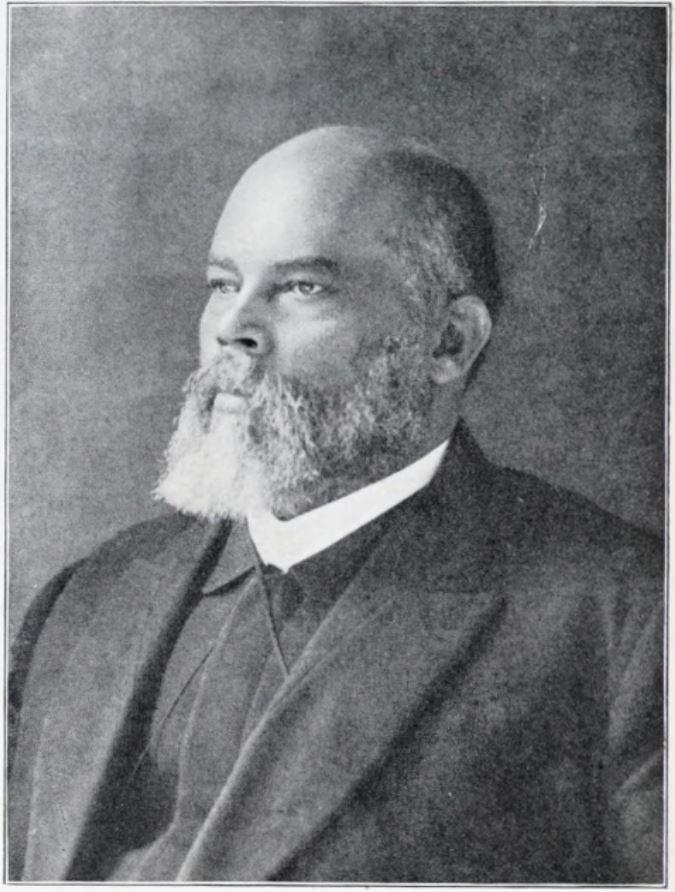
Essay Questions:
1. How has the AME Church played a major role in Black history nationwide?
2. What modern day African-American families can be compared to San Antonio’s highlysuccessful Sutton family?
3. Why is college so important in regard to your future success?
4. What is the history of “HBCU’s” in America?
18
Bishop Abram Grant
Enrichment Activities:
1. Visit a local HBCU. Tour the campus and take notes of the many interesting things that you see. Conclude the tour with a group discussion on how HBCU’s have managed to survive and thrive for so many years.
2. Make a list of 10 colleges that interest you. Research where they are located and what subjects that they specialize in. Then, re-list the colleges in order of which you would like to attend the most. Label college number one as your “dream college” and learn as much as you can about that particular college.
3. Take a tour of City Cemetery #3. Note how many people discussed in this section are buried there. Consider what other “buried” stories might be there regarding San Antonio’s Black history. Identify 3 new stories that you want to investigate.
Suggested HBCU’s to Research:
Howard University Morehouse College
Spelman College
Meharry Medical College
Cheyney University of Pennsylvania
Prairie View A&M University
Texas Southern University Paul Quinn College
Huston-Tillotson University St. Philip’s College
Vocabulary Words:
fraternity
congregation segregation integration
19
Key Figures and Places After the Turn of the Century
St. Philip’s College was founded in San Antonio by a congregation of Black Episcopalians led by Bishop James Steptoe Johnson at St. Philip's Church. The following year after its founding, they began a day school to teach industrial arts. In 1907, St. Philip's became a boarding school and later became St. Philip's College. Today, St. Philip’s College is a thriving HBCU and Hispanic-Serving Institution (HSI).
Artemisia Bowden was invited by Bishop James Steptoe Johnson to move from Georgia to San Antonio to serve as principal of St. Philip’s Day School in 1902. She soon changed the name of the school to “St. Philip’s Industrial and Normal School for Girls.” Ms. Bowden won a longfought battle for the school’s public funding in 1942. She was declared a Saint by the Episcopal Church in 2015.
Charles Bellinger was an accomplished African-American political leader and business owner in San Antonio. He opened a saloon in San Antonio in 1906. He also later owned a pool hall, café, taxicab company, a real estate and construction company, a theater, a barbershop, and a loan service for Blacks. In 1918, he led a successful effort to help elect John W. Tobin as sheriff and mayor of San Antonio. The power of his support led to San Antonio’s African-American community receiving lighted streets, plumbing, a meeting hall, a branch library, and additional schools He was also a member of the Masonic fraternity. He was the father of 12 children, including legendary San Antonio publisher Valmo Bellinger, who will be mentioned later in this section Charles Bellinger was pardoned by President Franklin D. Roosevelt after being jailed for tax evasion. He died on June 14, 1937 and is buried in the historic East View Cemetery in San Antonio. He was viewed as the richest Black man south of the Mason-Dixon Line.
Robert Johnson is considered by many as the most legendary blues music singer of all-time. He was born in Mississippi in 1911. He famously recorded a large amount of his classic blues songs in San Antonio. On November 23, 1936, he recorded these songs in room 414 of San Antonio’s famous Gunter Hotel. In 1938, he died by poisoning at the young age of 27
Myra Davis Hemmings graduated from HBCU Howard University in 1913. At Howard, she became one of the founders of Delta Sigma Theta Sorority, Inc., an international organization for women which today has hundreds of thousands of members. That same year, she also began her career as an English teacher at San Antonio’s Douglass High School. She later began teaching at Phyllis Wheatley High School, where she taught for 51 years. Also an accomplished actress, she received many accolades for acting in various stage productions. She died in 1968.
20
Section 3:
The Van Courtlandt Social Club was founded in San Antonio in 1915. It is the city’s oldest Black male social club and one of the oldest Black social clubs in the United States. Notable San Antonio residents Valmo Bellinger, G.J. Sutton, Dr. Charles Andrews, Dr. Robert Hilliard and Charles Clifton Andrews, Jr. are among the organization’s many highly-accomplished members over the years. The club hosts an annual debutante ball for girls, which still exists today and became known as one of the key social events in the city each year.
Dr. C.A. Whittier graduated from HBCU Meharry Medical School in 1917. He served as a First Lieutenant in the Medical Reserve Corps during World War I. He moved to San Antonio in 1917, establishing the Whittier Clinic at 928 East Crockett Street. He was active in many local, state and national medical organizations, including the Bexar County Medical Society, the Texas Medical Society, and the American Medical Association. He served as President of both the Lone Star Medical Association and the National Medical Association. He was a member of Phi Beta Sigma Fraternity, Inc. and the Elks fraternal organization Dr. Whittier also served as President of the local and statewide National Association for the Advancement of Colored People (NAACP) Chapters. He retired from medicine in 1965 and died in 1969. The C. A. Whittier Medical Society, a key organization for Black physicians, is named in his honor and is still active today.
The San Antonio Branch of the NAACP was established in 1918 by J.A. Grumbles and 503 other founding members. The branch is the second oldest in Texas. The NAACP was founded in 1909 to fight racial discrimination across the nation. The San Antonio Branch has been a leading force in the San Antonio community since its chartering and successfully hosted the NAACP National Convention in San Antonio in 2018.
The Carver Community Cultural Center was built in 1918 as a community center for AfricanAmericans in San Antonio. It was originally named the “Carver Library and Auditorium” in the 1930’s in honor of legendary African-American scientist Dr. George Washington Carver. Black music greats such as: Ella Fitzgerald, Count Basie, Louis Armstrong, and Duke Ellington famously performed in San Antonio at the Carver. Unfortunately, the historic venue fell into neglect by the 1970’s and was even scheduled for demolition in 1973. The community united and protested against destroying this historic structure, leading to the beloved building being fully renovated and reopened in 1977.
The Beta Beta Sigma Chapter of Phi Beta Sigma Fraternity, Inc. was the first graduate chapter of the “Divine 9” African-American fraternities and sororities chartered in San Antonio. Chartered in 1926, it was also the first Phi Beta Sigma graduate chapter in the state of Texas. The chapter was instrumental in forming the Negro Chamber of Commerce in San Antonio. Phi Beta Sigma Fraternity, Inc. was founded in 1914 at Howard University.
21
The Alpha Tau Omega Chapter of Alpha Kappa Alpha Sorority, Inc. was established as the first San Antonio graduate chapter of Alpha Kappa Alpha in 1930. Alpha Kappa Alpha Sorority, Inc. was founded in 1908 at Howard University. The Alpha Tau Omega Chapter in San Antonio has been frequently recognized for its successful ownership of the Roseville Apartments on San Antonio’s Eastside. First constructed in 1970, the Roseville apartment complex provides affordable living for senior citizens in San Antonio.
Valmo Bellinger was the son of Charles Bellinger who is featured previously in this section. He founded the historic San Antonio Register newspaper in 1931. In over 50 years of publishing, Bellinger was known for never missing a publishing deadline. As a community advocate, his efforts helped create better schools and parks for African-Americans in San Antonio. He attended San Antonio’s St. Peter Claver Junior High School, St. Thomas Academy in Minnesota, and two prestigious Ivy League schools- the University of Pennsylvania and Harvard University. He also supported the founding of HBCU Texas Southern University in Houston, Texas He was a charter member of the Psi Alpha Chapter of Omega Psi Phi Fraternity, Inc. in San Antonio.
Eugene Coleman was born in Ennis, Texas in 1921. He moved to San Antonio as a result of military service. An accomplished community advocate and businessman, Mr. Coleman was instrumental in saving the Carver Community Cultural Center from demolition. A prolific photographer, he mastered the art of photographing people with dark skin tones. He was hired by Ebony and Jet magazines to take photos in Texas. He founded the SNAP newspaper in 1949. SNAP became known for publishing articles on police brutality and unfair Jim Crow practices in San Antonio.
The San Antonio Alumni Chapter of Kappa Alpha Psi Fraternity, Inc. was chartered in San Antonio in 1931. Kappa Alpha Psi Fraternity, Inc. was founded at Indiana University in Bloomington, Indiana in 1911. The charter members of the San Antonio Alumni Chapter were: Dr. Joseph O. Aycock, Dr. B. DuBois Brown, Scott D. Foley, Clarence B. Friday, John W. Holland, John D. Lowery, Jr., and G.J. Sutton. G.J. Sutton was a legendary state legislator who will be featured in the next section. The chapter hosted the 29th Grand Chapter meeting of Kappa Alpha Psi in San Antonio in 1939.
The San Antonio Alumnae Chapter of Delta Sigma Theta Sorority, Inc. was chartered as the first Delta Sigma Theta graduate chapter in San Antonio in 1933. Delta Sigma Theta Sorority, Inc. was founded in 1913 at Howard University. Founder and San Antonio educator Myra Davis Hemmings, who was featured previously in this section, led the effort to establish the local chapter. In 1947, the chapter successfully hosted the organization’s national convention.
The Alpha Pi Zeta Chapter of Zeta Phi Beta Sorority, Inc. was chartered in San Antonio in 1939. The charter members were: Lucille Inman Boyd, Helen Minter Bradley, Sadie Faine, Mabel Booker Lowry, and Violet Nelson Inman. Zeta Phi Beta Sorority, Inc. was founded in 1920 at Howard University.
22
The Psi Alpha Chapter of Omega Psi Phi Fraternity, Inc. was chartered in 1940 as the graduate chapter of Omega Psi Phi Fraternity, Inc. in San Antonio. Omega Psi Phi was founded in 1911 at Howard University. The charter members of the chapter in San Antonio were: Dr. William Virgil Hurd, Valmo Bellinger, Ernest M. Foxx, Dr. Madison L. Preacher, Samuel D. Kane, G.P. Inge, Jr., John Paul Chretian, and Dr. Richard D. Kidd.
The Alpha Phi Sigma Chapter of Sigma Gamma Rho Sorority, Inc. was chartered in 1945. Sigma Gamma Rho Sorority, Inc. was founded at Butler University in Indianapolis, Indiana in 1922. The organization currently has over 500 chapters worldwide.
Dr. Ruth Ann Bellinger was the daughter of legendary San Antonio businessman Charles Bellinger. She attended San Antonio’s St. Peter Claver Junior High School and graduated from Douglass High School. She then graduated from Smith College and later earned her medical degree from Howard University. She became licensed to practice medicine on November 2, 1946 and eventually owned her own medical practice. Dr. Bellinger was one of the first AfricanAmerican physicians ever accepted into the Bexar County Medical Society. She also worked for 12 years on the medical staff at San Antonio’s Kelly Air Force Base before retiring. She was a member of Delta Sigma Theta Sorority, Inc.
The Delta Rho Lambda Chapter of Alpha Phi Alpha Fraternity, Inc. was chartered in 1949 as San Antonio’s first graduate chapter of Alpha Phi Alpha Fraternity, Inc., the first of the African-American college fraternities. Alpha Phi Alpha was founded in 1906 at Cornell University, an Ivy League school. The charter members of the chapter in San Antonio were: Ulysses James Andrews, Bernard Adams, Rowland A. Martin, Reginald T. Pickard, John W. Warren, Levi Jackson, Jr., John D. McDonald and James E. Taylor.
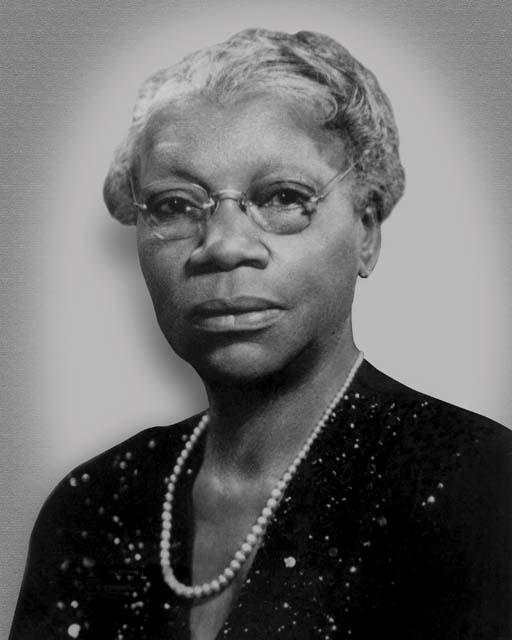
23
Section 3 Photo Gallery: Artemisia Bowden
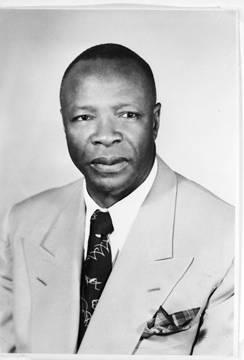
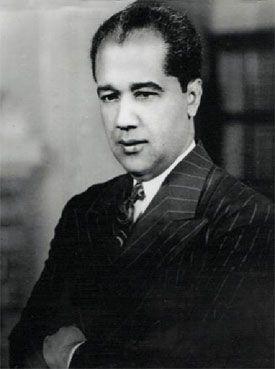
24
Dr. C.A. Whittier
Valmo Bellinger
Short Answer Questions:
1. Why was Artemisia Bowden declared a “Saint?”
2. What is the National Medical Association?
3. Who was St. Peter Claver?
4. What are some of the national accomplishments of the “Divine 9?”
5. What is today’s equivalent of the newspaper?
Essay Questions
1. Discuss the history of HBCU’s in Texas
2. Who was the first Black physician in the U.S.? When did the practice of medicine emerge among Blacks in America?
3. Research one of the organizations of the “Divine 9.”
4. Research the history of the first Black newspaper in the U.S.
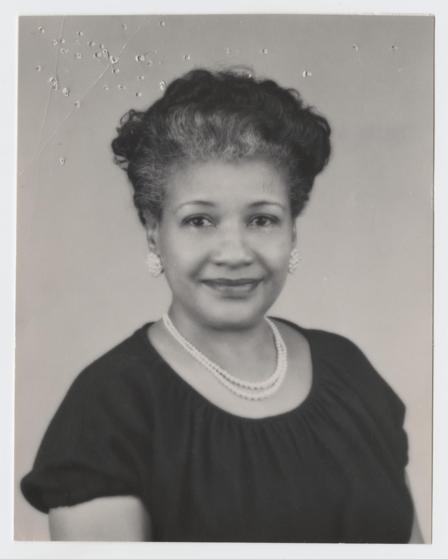
25
Dr. Ruth Ann Bellinger
Enrichment Activities:
1. Invite an African-American physician to come speak to your class about his or her path to becoming a physician and the challenges that he or she faced as an African-American.
2. Invite an HBCU graduate to come speak to the class about his or her experience attending an HBCU and how it benefited them in their career and life as a whole.
3. Take the Black History River Tour. Which stories intrigued you and why? Discuss other things that you now want to know about Blacks in San Antonio.
Suggested HBCU’s to Research:
Lincoln University Florida A&M University
Hampton University North Carolina A&T University
Jackson State University Grambling University
Wiley College Texas College
Jarvis Christian College Southwestern Christian College
Vocabulary Words:
saint sorority
corps chartering demolition
26
Key Figures of the Civil Rights Movement Years in San Antonio
Rev. Claude Black served as pastor of San Antonio’s Mount Zion Baptist Church for 49 years. He served from 1949-1998. He was elected as a San Antonio city councilman from 1973-1978. In the 1950’s and 1960’s, Rev. Black led various civil rights marches throughout Texas. He was an associate of Dr. Martin Luther King Jr. and Thurgood Marshall. He participated in the historic Civil Rights Conference at the White House in 1966. He received many threats to himself and his family as a result of his civil rights efforts. Those threats included a drive-by shooting at his home and the burning of Mount Zion Baptist Church in 1974. He attended HBCU’s HustonTillotson University and Morehouse College. He was a member of Omega Psi Phi Fraternity, Inc. and San Antonio Lodge No. 1. He died in 2009.
Hattie Briscoe was the first African-American woman to graduate from St. Mary’s University School of Law in San Antonio in 1956. She was the only African-American female attorney in Bexar County for nearly 30 years. As an undergraduate, she attended HBCU Wiley College in Marshall, Texas where she earned a degree in education. She also studied to be a cosmetologist at her husband’s salon, William M. Briscoe’s Beauty Salon. She earned her cosmetology license through San Antonio’s Hicks Beauty School. She taught cosmetology at Phyllis Wheatley High School. To even further advance her career, she spent several summers earning her master’s degree in educational administration from HBCU Prairie View A&M University. After losing her job as a teacher, she then made history by attending St. Mary’s University School of Law and graduating at the top of her class. She died in 2002.
Mary Lillian Andrews was the granddaughter of San Antonio entrepreneurs Samuel and Lillian Sutton and the daughter of legendary San Antonio physician Dr. Charles Andrews. As a 17-year old in 1960, she took the historic steps to desegregate the lunch counters in downtown San Antonio. As a student at San Antonio’s Our Lady of the Lake University and President of the local NAACP Youth Council, she wrote letters to the managers of downtown San Antonio stores asking that they give equal service to all, regardless of race. Her letters were so well-written, the lunch counters were eventually integrated peacefully as a result of those letters, effectively ending segregation at downtown lunch counters in San Antonio. She was a member of Alpha Kappa Alpha Sorority, Inc.
The San Antonio Chapter of The Links, Incorporated was chartered in 1960. The Links, Incorporated was founded in Philadelphia, Pennsylvania in 1946. It is one of the nation’s oldest and largest volunteer service organizations of extraordinary women who are committed to enriching, sustaining and ensuring the culture and economic survival of African Americans and other persons of African ancestry. The charter members of the San Antonio chapter were: Ophelia Aycock, Josephine Bellinger, Helen Booker, Bella Cameron, Christine Clardy, Doris Horne Ellison, Anna Harris, Vernis Hudgins, Myrtle Hurd, Alma Inge, Marion Johnson, Lillian Story, Julia Taylor and Augusta Whittier.
27
Section 4:
Rev. S.H. James was the first Black city councilman in San Antonio. He served on the city council from 1965-1971. He served as pastor of Second Baptist Church for 48 years. He was a graduate of HBCU Tennessee State University and Andover Newton Theological Seminary in Boston, which is now a part of Yale Divinity School. He served on the Board of Directors for San Antonio’s VIA Metropolitan Transit bus system, YMCA, Boy Scouts of America, Methodist Hospital, and HBCU Morehouse College School of Religion in Atlanta, Georgia. He even starred as a leading actor in a feature film in his younger years. Rev. James died in 1992.
Rev. Raymond A. Callies, Jr. was the founding pastor of First Gethsemane Baptist Church in San Antonio. He was also a math, history, and industrial arts teacher for 30 years. A Life Member of the NAACP, Rev. Callies organized and led San Antonio’s first Dr. Martin Luther King, Jr. March on April 6, 1968, just two days after the death of Dr. King. He began advocating for a Dr. Martin Luther King, Jr. state holiday in 1983. The legislation for the state holiday eventually passed in 1991. Rev. Callies was a strong advocate for public works and safety improvements on the Eastside, including street lights, flood drainage and easy access to schools. He died in 2011.
G.J. Sutton was the 8th child of Samuel and Lillian Sutton. In 1932, he earned a Bachelor of Science degree from HBCU Wilberforce University in Wilberforce, Ohio and also a mortuary science degree from Cincinnati College. In 1948, he was elected to the Board of Trustees of the San Antonio Union Junior College District, where he advocated for more resources for St. Philip’s College. In 1972, he was the first African-American from San Antonio elected to the Texas state legislature In 1980, a three-story learning center on the St. Philip’s College campus was named in his honor. He was a charter member of the San Antonio Alumni Chapter of Kappa Alpha Psi Fraternity, Inc. He died in 1976.
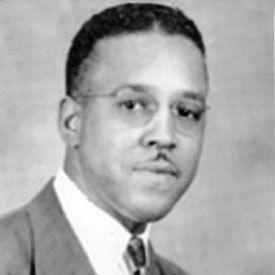
28
Section 4 Photo Gallery:
Rev. Claude Black
Short Answer Questions:
1. Why are the civil rights efforts in San Antonio not as widely known as many other major cities?
2. What is the purpose of the NAACP?
3. What is the purpose of the annual MLK March in San Antonio?
4. Why do people “march” to protest or support various causes?
5. How can we further highlight the legacy of Hattie Briscoe to inspire more female students to become attorneys?
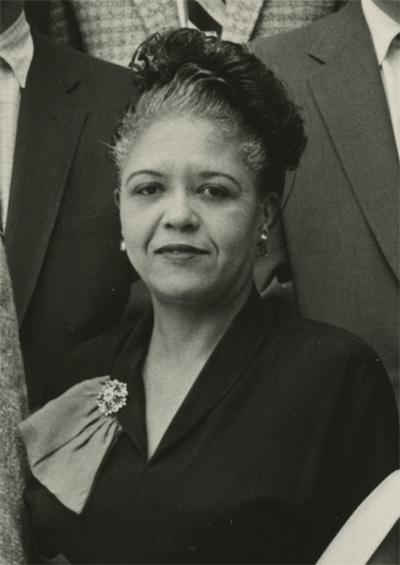
29
Attorney Hattie Briscoe
Essay Questions:
1. Describe the concept of “civil rights.”
2. Discuss three of the top leaders of the Civil Rights Movement.
3. Other than the NAACP, discuss two other civil rights organizations that contributed to history and still exist today.
4. Research who some of the Texas leaders of the Civil Rights movement were.
5. How would a modern day Civil Rights Movement use technology to further its cause?
6. What does a civil rights attorney do?
7. How does a “sit-in” work?
Enrichment Activities:
1. Invite an African-American attorney to visit the class and discuss his or her career and educational path.
2. Take a walking tour of downtown San Antonio. Explore some of the places where services changed as the city shifted from the Jim Crow era to the Civil Rights era.
3. Invite your area’s city councilperson to speak to the class and discuss his or her duties and responsibilities as a member of the city council.
Vocabulary Words:
cosmetology Jim Crow
protest attorney
justice
30
San Antonio Blacks Flourish Into the Modern Day!
San Antonio’s Dr. Martin Luther King, Jr. March is the largest Dr. Martin Luther King, Jr. holiday march in the nation. Up to 400,000 people annually have attended the march. The march began in 1987 as a result of the efforts of Rev. Raymond Callies. The march starts each year on San Antonio’s Eastside at Martin Luther King, Jr. Academy and concludes at Pittman-Sullivan Park. The march features many of San Antonio’s historic organizations.
Lou Nelle Sutton was a notable African-American female member of the Texas legislature, filling her husband G.J. Sutton’s seat in 1976. She attended HBCU Huston-Tillotson University in Austin She was a member of St. Paul United Methodist Church in San Antonio. She was also a member of Alpha Kappa Alpha Sorority, Inc., The Links, Incorporated, and a Life Member of the NAACP.
Ruth Jones McClendon was widely known for serving successfully in the Texas legislature for over 20 years. She previously served on the San Antonio City Council. She was a graduate of HBCU Texas Southern University and a member of Delta Sigma Theta Sorority, Inc., and The Links, Incorporated. She was married to Denver McClendon, one of the few African-Americans to be elected as a member of the Alamo Colleges Board of Trustees.
Aaronetta Pierce served as the Founding Chair of San Antonio’s Dr. Martin Luther King, Jr. March Commission. She is a graduate of the University of Iowa. She was appointed by the Texas Governor to serve on the Texas Commission on the Arts. She was inducted into the Texas Women’s Hall of Fame in 1993. She is a member of Alpha Kappa Alpha Sorority, Inc. and The Links, Incorporated. She is the wife of Dr. Joseph Pierce, an accomplished African-American anesthesiologist in San Antonio who was also one of the original African-American owners of the San Antonio Spurs.
Dr. Charles Andrews, Sr. was a legendary physician in the San Antonio area for several decades. He graduated from Howard University with his undergraduate degree and also graduated from Howard University’s medical school. He served as President of the Lone Star Medical Association and was also a member of the C.A. Whittier Medical Society. He wrote a weekly article for the San Antonio Register newspaper. He was a member of Kappa Alpha Psi Fraternity, Inc., the Van Courtlandt Social Club, and was also a Prince Hall Mason. He died in 2004.
31
Section 5:
Mario Marcel Salas is a political leader in San Antonio and former professor at the University of Texas at San Antonio (UTSA). Born in 1949, he earned degrees from San Antonio College, UTSA, Our Lady of the Lake University, and the University of Texas at Austin. He served as Field Secretary of the local Student Non-Violent Coordinating Committee (SNCC) chapter, which was the last surviving SNCC-Black Panther chapter in America. He is a Co-Founder of the historic Barbara Jordan Community Center on San Antonio’s Eastside. He served two successful terms on the San Antonio City Council. He also served as Vice President of the Judson ISD school board, one of the largest school districts in Bexar County.
Dr. Harmon Kelley was the first physician to open an OB/GYN practice on the southeast side of San Antonio. He was a graduate of HBCU Prairie View A&M University and the University of Texas Medical Branch in Galveston. He served as a U.S. Army medical officer for 8 years He practiced medicine for 44 years and was a recipient of the C.A. Whittier Lifetime Achievement Award.
Charles Clifton Andrews, Jr. is a retired radio executive in San Antonio. The son of Dr. Charles Andrews, Sr., he is a graduate of HBCU Lincoln University. He worked as an archivist for Bexar County and numerous other key positions in the city over the years. In 1989, he was named President of Inner City Broadcasting, a national media company co-founded by Black History legend and San Antonio native Percy Sutton. Andrews also served as Chair of the San Antonio Housing Authority. He is a member of Kappa Alpha Psi Fraternity, Inc., Sigma Pi Phi Fraternity, and the Van Courtlandt Social Club.
Dr. Frank Bryant, Jr. was the co-founder of the Ella Austin Medical Clinic. A graduate of Wheatley High School in San Antonio, he also graduated from St. Philip’s College and HBCU Prairie View A&M University. He received his medical degree from the University of Texas Medical Branch in Galveston. He also served as an officer in the U.S. Army Medical Corps. He was the first African-American President of the Bexar County Medical Society.
Dr. Leonard E. Lawrence was the first African-American to serve as Dean of Students at UT Health San Antonio, San Antonio’s medical school. He also served as President of the National Medical Association, Chair of the Board of Directors for the United Way of San Antonio, and Chair of the San Antonio Area Foundation. He is a member of Kappa Alpha Psi Fraternity, Inc. and a Charter Member of the Gamma Phi Boulé of Sigma Pi Phi Fraternity.
Dr. Dianna M. Burns-Banks is an accomplished African-American female physician in San Antonio. She has operated her own successful medical practice and has over 40 years of experience in the medical field She is a graduate of HBCU Xavier University of Louisiana, the University of Louisville School of Medicine, and Trinity University. She served as President of the Bexar County Medical Society. She is also a member of The Links, Incorporated and has served on numerous boards in the San Antonio community.
32
Dr. Robert L.M. Hilliard was the first Black physician to perform surgery at all of the major hospitals in San Antonio. He served as President of the National Medical Association. He was a graduate of Wheatley High School and a member of St. Paul United Methodist Church. He graduated from HBCU Howard University where he was the roommate of civil rights legend Andrew Young. He received his medical degree from the University of Texas Medical Branch in Galveston. He also served as a flight surgeon in the U.S. Air Force. He was the first Black physician to receive specialty training at the Bexar County Hospital. He was a member of Alpha Phi Alpha Fraternity, Inc., Sigma Pi Phi Fraternity, the Van Courtlandt Social Club, and the NAACP.
Dr. Robert L.M. Hilliard, Dr. Joseph A. Pierce, Jr., Dr. James Hadnott, and Janis Hadnott were the African-American part-owners of the San Antonio Spurs from 1974-1988. They were among the early investors in the team in the American Basketball Association (ABA). The Spurs entered the National Basketball Association (NBA) in 1976 The group’s initial investments in the team were around $15,000, however, the team is worth billions of dollars today.
George “Iceman” Gervin is an NBA Hall of Fame inductee and former all-star player for the San Antonio Spurs. Originally from Detroit, Michigan, he attended Eastern Michigan University. After a stellar career with the Spurs, he was inducted into the NBA Hall of Fame in 1996. George Gervin Academy, a charter school district with several campuses in San Antonio and Phoenix, Arizona is named in his honor. Gervin has been recognized as a legend in the San Antonio community for several decades.
David Robinson is an NBA Hall of Famer and former member of the San Antonio Spurs. He won two NBA championships with the Spurs. A graduate of the prestigious United States Naval Academy, he was selected as the first pick of the 1987 NBA draft. After serving 2 years of his required time in the military as a Naval Academy graduate, he joined the Spurs and won the NBA “Rookie of the Year” award. In 1995, he won the NBA’s “Most Valuable Player” award. He also won two Olympic gold medals. Robinson founded Carver Academy, a charter school that serves students on the Eastside of San Antonio. He was inducted into the NBA Hall of Fame in 2009 and is an entrepreneur and part-owner of the San Antonio Spurs.
Tim Duncan is an NBA Hall of Famer who spent his entire professional career with the San Antonio Spurs. He was named the NBA’s “Most Valuable Player” twice in his career. Regarded by many as the best to ever play the power forward position in the NBA, he attended all 4 years at Wake Forest University. He has served as an Assistant Coach for the San Antonio Spurs.
Shaquille O’Neal is an NBA Hall of Famer who attended high school in San Antonio. He starred in basketball at Cole High School, which is located on San Antonio’s Ft. Sam Houston Army post. He also starred in basketball at the college level at Louisiana State University. He has received a doctoral degree, a sheriff’s license, and owns numerous business franchises throughout the U.S.. He is an award-winning commentator on the television show “Inside the NBA.” He is a Prince Hall Mason and member of Omega Psi Phi Fraternity, Inc.
33
Clarence “Cito” Gaston is a former Major League Baseball all-star player and manager. Born in San Antonio in 1944, he became the first African-American baseball manager to win a World Series. After serving many successful years as manager of the Toronto Blue Jays in Toronto, Canada, he was inducted into the Canadian Baseball Hall of Fame in 2002.
Dr. Bernard A. Harris, Jr. is a former NASA astronaut who was the first African-American to walk in space. He is a native of San Antonio and a 1974 graduate of San Antonio’s Sam Houston High School. He was a mission specialist on several space shuttles and has traveled over 72 million miles in space. He is also a licensed physician and serves as CEO of the National Math and Science Initiative. Harris Middle School in San Antonio is named in his honor. He is a member of Kappa Alpha Psi Fraternity, Inc. and Sigma Pi Phi Fraternity.
Mel Waiters was a legendary San Antonio blues music singer. He was born in 1956. A former radio disc jockey, he launched a successful music career. In 1999, his fourth album made it to the “Billboard Top R&B/Hip Hop Albums” chart. He died of cancer in 2015 at the age of 58 years old. “Mel Waiters Way” is a street that is named in his honor in San Antonio.
The Gamma Phi Boulé of Sigma Pi Phi Fraternity was chartered in 1988 in San Antonio as the local member boulé of Sigma Pi Phi Fraternity. Sigma Pi Phi Fraternity, also known as “The Boulé,” was founded in 1904 in Philadelphia, Pennsylvania as the first Black fraternity for professional men who are college graduates and have exemplary achievements in their profession.
The Gamma Alpha Omega Chapter of Iota Phi Theta Fraternity, Inc. was chartered as the San Antonio chapter of Iota Phi Theta in 2011. Iota Phi Theta Fraternity, Inc. was founded in 1963 at HBCU Morgan State University in Baltimore, Maryland as the 9th member of the “Divine 9” organizations.
Judge Jason Pulliam is the first African-American federal judge to serve on the Western District of Texas bench, which covers all of San Antonio. He has a lifetime appointment as a federal judge. A former United States Marine Corps officer, he earned his law degree from an HBCU law school, Texas Southern University’s Thurgood Marshall School of Law. He is only the third graduate of his law school to serve as a federal judge.
Commissioner Tommy Calvert was elected in 2014 as the first African-American Bexar County Commissioner. He is also the youngest Bexar County Commissioner. He represents over 500,000 residents in his position. He helped save San Antonio’s Randolph Air Force Base from closure and has led numerous projects to save and produce more jobs in San Antonio and Bexar County. He has helped raise millions of dollars to improve the county.
Ivy Taylor became the first African-American female mayor of San Antonio when she was elected in 2015. A graduate of Yale University, the University of North Carolina, and the University of Pennsylvania, her academic research focus is leadership at HBCU’s. She served as the first female president of HBCU Rust College in Holly Springs, Mississippi. She is also a member of Delta Sigma Theta Sorority, Inc. and The Links, Incorporated.
34
Clarence “Reggie” Williams was the first African-American to serve as CEO of the San Antonio Area Foundation. The San Antonio Area Foundation has managed millions of dollars over the years to provide grants to nonprofit corporations in the San Antonio community to benefit the less fortunate. A retired United States Air Force Colonel, Williams also served as a Vice President at USAA, one of the major national companies that is headquartered in San Antonio.
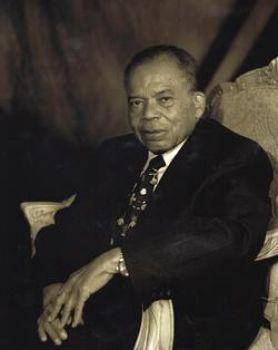
Councilman Jalen McKee-Rodriguez was elected as San Antonio’s District 2 Councilperson on June 5, 2021. He became the first openly-gay man elected to City Council in San Antonio and the first openly-gay Black man elected to any seat in Texas. He earned his bachelor’s and master’s degree from the University of Texas at San Antonio (UTSA). He is also a certified math teacher, licensed bartender, and Zumba instructor.
Commissioner Rebeca Clay-Flores was elected in 2020 as the first African-American and Mexican woman elected as a Bexar County Commissioner. Taking office in the midst of the Coronavirus pandemic, she secured funding for construction for residents who lacked water in their community. A few of her other accomplishments also include the allocation of funding for the San Antonio Mobile Mental Health Collaborative for schools in her jurisdiction, advocating for Juneteenth as a county holiday, advocating for a new UHS Bexar County hospital on the Southside and advocating for funding for the new home of SAAACAM.
35
Section 5 Photo Gallery:
Dr. Robert L.M. Hilliard
Short Answer Questions:
1. Why is it important that more African-Americans strive to become owners of professional sports teams?
2. How did serving as a military officer help David Robinson in the NBA?
3. Why is a strong knowledge of math and science so important for an astronaut?
4. What is the career path to becoming a federal judge?
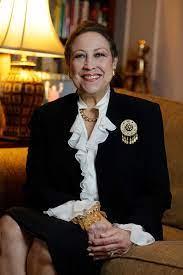
Essay Questions:
1. Research three famous athletes who also received their college degrees.
2. Research the history of the highly-successful San Antonio Spurs franchise.
3. How difficult is it to become a NASA astronaut?
36
Aaronetta Pierce
Enrichment Activities:
1. Develop a plan to bring an NFL and MLB team to San Antonio since the city does not have teams in either league.
2. Research three careers that you feel will be the best jobs of the future.
3. What would be your “10-Point Plan” if you ran for a political office?
Vocabulary Words:
iconic franchise federal county appointed
37
Bibliography
The curriculum was developed with materials, text, and photos provided by SAAACAM. The following bibliographical information was also used in the text.
https://a-z-animals.com/blog/the-10 -oldest -human-fossils-ever-found/
https://blackhistorystudies.com/resources/resources/100-things-about -africa/
https://www.history.com/topics/black-history/slavery
https://www.searchablemuseum.com/1514-1866 -the-transatlantic-slave-trade
https://www.britannica.com/topic/Thirteenth-Amendment
https://texashistory.unt.edu/ark:/67531/metapth247066/m1/6/
https://www.austintexas.gov/sites/default/files/files/Joe Article.pdf
https://www.thestoryoftexas.com/discover/campfire-stories/african -americans
https://sanantonioreport.org/black-owners-played -vital-role-in-spurs-early-history/
https://www.thehistorymakers.org/biography/aaronetta-pierce
https://www.thehistorymakers.org/biography/mario-marcel-salas
https://www.britannica.com/biography/David-Robinson
https://business.rice.edu/person/bernard-harris-jr
https://sanantonioreport.org/new-federal-judge-jason-pulliam-sees-himself -as-embodiment-ofthe-american -dream/
https://www.bexar.org/719/Precinct-4-Commissioner-Tommy-Calvert
https://www.hmdb.org/m.asp?m=163381
https://thecarver.org/about/#history-mission
https://www.tclf.org/ellis-alley-enclave-and-samuel-and-lillian -sutton -home
https://www.britannica.com/biography/George-Gervin
38
https://www.deltarholambda.com/about-the-chapter/
https://www.mightyninth.com/chapter_page.php?ChapterNumber=569&title=Psi%20Alpha
https://www.sanantonionupes.org
https://themasonicobserver.wordpress.com/2020/07/05/bishop-abraham-grant/
https://news4sanantonio.com/news/local/blues-legend-robert-johnsons-first-recording -sessionhappens-at-gunter -hotel-in -1936
39
